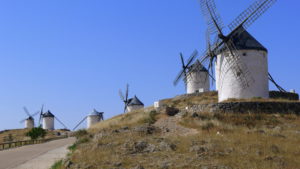
Story and photos by Bob Schulman
Try to imagine the soldiers of Spain’s Fernando V in 1492 as they charged the ramparts of Granada under blazing red crosses on their battle flags. While slashing away at the Moors – Granada was the last city in Spain to be reconquered by Christian armies from the Muslims – the troopers might have sung one of the hit songs of the day: “La Cucaracha.”
Four centuries later, a rag-tag army actually did sing that song when Pancho Villa’s bugles called them to battle. More about that later.
Like most folk ballads, La Cucaracha has an obscure origin and lots of different twists in its lyrics. Most supposedly tell the story of a cockroach that lost one of its six legs and is trying to hobble around on the remaining five – but this is actually a satirical metaphor for political or social issues of the times. The “hobbler” in one version is in reality a corrupt politician, in another version an adulterous priest and a drunken murderer in another.of the times).
In King Fernando’s day the bad guys were the Muslims, who’d occupied Spain for nearly 800 years. The song took a jab at them with these lyrics:
“From the sideburns of a Moor I must make a broom…to sweep the quarters of the Spanish infantry.”

Thanks to Pancho Villa, the song is generally associated with Mexico, but it was likely written in Spain – and long before the revolution south of the border.
For instance, in a book published in 1819, Mexican political writer Jose Joaquin Fernandez de Lizardi claims the song was brought from Spain to Mexico by a naval captain.
And some lyrics from the song showed up in 1882 in a book by Spanish author Francisco Rodriguez Marin about popular Spanish tunes over the ages.
La Cucaracha also popped up in writings about Spain’s civil wars of the mid-1800s and France’s invasion of Mexico in 1861. Most remembered in the history books, of course, are versions of the song written during the Mexican revolution.
Back then the cockroach was Victoriano Huerta, a heavy boozer who orchestrated the overthrow and murder of Mexico’s beloved President Francisco Madero in 1913.

Rebel armies led by Pancho Villa in the north and Emiliano Zapata in the south ousted Huerta the following year.
The rebels, particularly Villa’s troops, used La Cucaracha as their battle song – a sort of Mexican equivalent of America’s Yankee Doodle.
History is fuzzy on this, but some chroniclers of the revolution say Huerta was tagged as the song’s wobbly cockroach because he drank so much. He was also said to be a stoner, which might have led to this addition to La Cucaracha’s lyrics during the revolution:
“The cockroach, the cockroach…now he can’t go traveling
Because he doesn’t have, because he lacks…marijuana to smoke.”
